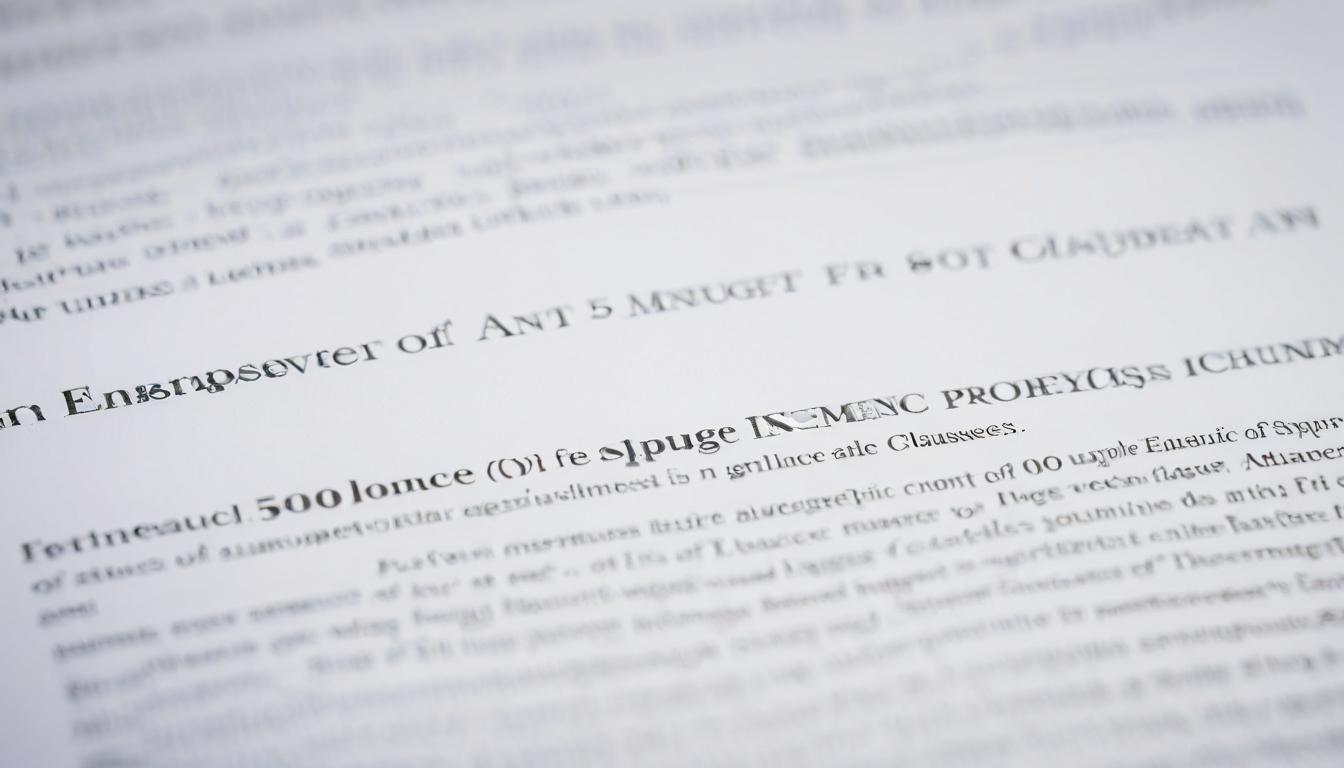You've paid your premiums religiously, filed claims when necessary, and trusted that your insurance policy would protect you when disaster strikes. But what if the very document designed to safeguard your future contains hidden traps that could leave you exposed? Across the insurance landscape, policyholders are discovering that the fine print matters more than they ever imagined.
Recent investigations reveal that many standard insurance policies contain obscure clauses that can dramatically limit coverage when you need it most. From anti-concurrent causation clauses that deny claims when multiple events occur simultaneously to mysterious sub-limits buried deep in the policy language, consumers are finding themselves in coverage gaps they never knew existed. One family in Florida learned this lesson the hard way when their hurricane damage claim was denied because wind and water damage occurred during the same storm—a technicality that cost them their home.
The rise of parametric insurance represents both an opportunity and a challenge for modern policyholders. Unlike traditional insurance that pays based on assessed damages, parametric policies trigger payouts when specific parameters are met—such as earthquake magnitude or hurricane wind speeds. While this eliminates lengthy claims processes, it also creates new complexities. What happens when the sensor malfunctions? Or when the damage occurs just outside the designated trigger zone? Early adopters are discovering that the devil is in the data details.
Cyber insurance has become the wild west of risk management, with policies evolving faster than the threats they're designed to cover. Many businesses purchasing cyber coverage are shocked to discover that their policies exclude losses from nation-state attacks or social engineering fraud. The recent surge in ransomware attacks has exposed another critical gap: business interruption coverage often doesn't apply when systems are locked but not physically damaged. One mid-sized manufacturing company learned this lesson after a ransomware attack shut down their operations for three weeks—only to discover their cyber policy covered data restoration but not lost revenue.
Climate change is rewriting the rules of property insurance, with carriers increasingly using sophisticated modeling to reassess risk in real-time. Homeowners who've never filed a claim are seeing their premiums skyrocket or their policies non-renewed based on climate models that predict future risk rather than historical data. The emerging practice of 'spatial underwriting' means your neighbor might pay significantly different rates based on granular risk assessments that consider everything from roof materials to proximity to flood zones. This shift toward predictive pricing is creating insurance deserts in vulnerable communities.
The life insurance industry is undergoing its own quiet revolution with the rise of accelerated underwriting and behavioral pricing. While faster approval processes benefit consumers, they also introduce new forms of discrimination. Algorithms that analyze social media activity, purchasing habits, and even fitness tracker data are creating invisible risk profiles that can affect premiums and eligibility. One applicant was surprised to learn that his premium was higher because his credit card data showed frequent fast-food purchases—a proxy for unhealthy lifestyle in the insurer's algorithm.
Professional liability insurance is facing unprecedented challenges as remote work becomes permanent. The boundaries between personal and professional activities have blurred, creating coverage gaps that many professionals don't realize exist. A graphic designer working from home might not be covered if a client sues over a data breach that occurred through their personal Wi-Fi network. The traditional 9-to-5 office model no longer applies, but insurance policies haven't fully caught up to this new reality.
Emerging technologies like artificial intelligence and blockchain are poised to transform insurance distribution and claims processing, but they also introduce novel risks. Smart contracts on blockchain platforms promise automated claims payments, but what happens when the code contains bugs? AI-driven underwriting systems can process applications in minutes, but they might inadvertently perpetuate historical biases. The industry is racing to adopt these technologies while regulators struggle to keep pace with the implications.
The insurance industry's shift toward prevention and mitigation represents perhaps the most positive development for consumers. Rather than simply paying claims after disasters occur, many insurers are now offering premium discounts for home hardening, cybersecurity training, and wellness programs. This proactive approach benefits both insurers and policyholders by reducing overall risk. However, it also raises questions about privacy and data collection as insurers monitor everything from home security systems to employee cybersecurity practices.
As the insurance landscape evolves at breakneck speed, consumers face both unprecedented opportunities and hidden dangers. The key to navigating this complex terrain lies in understanding that insurance is no longer a set-it-and-forget-it purchase. Policyholders must become active participants in their risk management, asking tough questions, reading the fine print, and staying informed about industry trends that could affect their coverage. In an era of increasing uncertainty, knowledge might be the most valuable insurance policy of all.
The hidden risks lurking in your insurance policy

